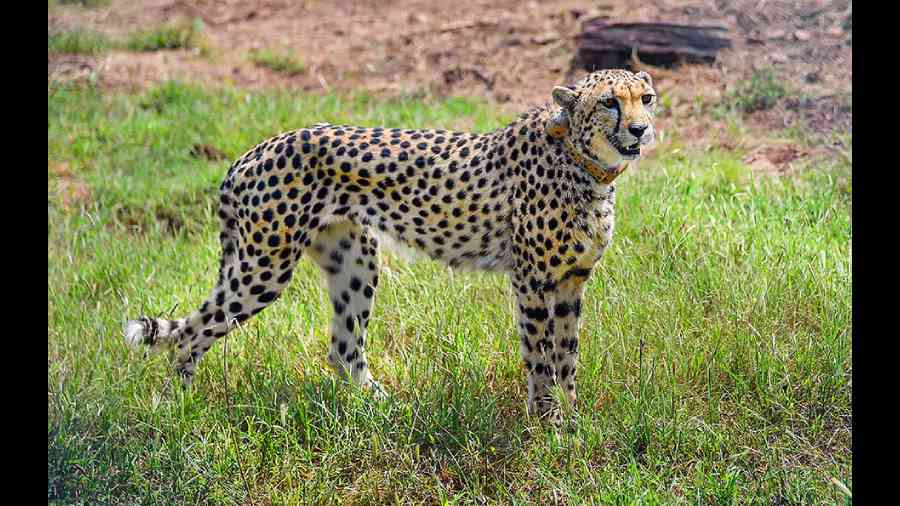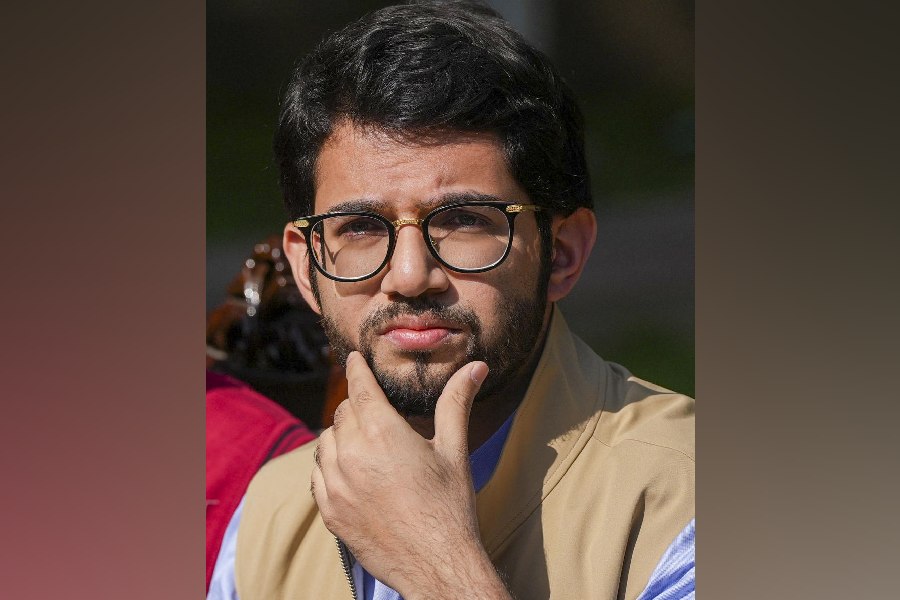Two cheetahs from Namibia at the Kuno National Park, Madhya Pradesh, are pregnant after mating in late December, a former project scientist has said while calling the development “something very positive” for India’s cheetah introduction project that lost its first member on Monday.
Siyaya, a three-year-old captive-reared cheetah, and Asha, a four-year-old wild cheetah, who are among eight flown in from Namibia last September are expected to deliver within days to weeks, Yadvendradev Jhala, the scientist who had led the project until February 28, said.
Another captive-reared cheetah from Namibia, Sasha, had also mated in December but died on Monday after suffering from kidney failure since January. Wildlife biologists say kidney failure is known to occur in cheetahs that have been in captivity for long.
Jhala, who had monitored the cheetahs held in large fenced enclosures, said pairing and mating behaviour had been observed for Sasha, Siyaya and Asha in late December. The gestation period for cheetahs is 90 to 93 days. Siyaya is about to deliver cubs, while Asha is expected to deliver between April 15-30, he said.
“We’re about to get the first Indian-born cheetahs in the wild after seven decades,” said Jhala, former professor and dean at the Wildlife Institute of India, Dehradun, who was lead scientist on the project since it was proposed in 2009.
Jhala, whose research scholars continue to monitor the cheetahs, said Asha had been released into the wild, in time for her to explore her habitat and find a suitable site to litter — ideally a place with easy access to prey, water and low chance of leopards attacking her cubs.
The US-based Cheetah Conservation Fund (CCF) that manages some cheetah populations in Namibia and had facilitated the transfer of the eight into India said the three captive-reared animals had been sent because they were “the best candidates” from a genetic perspective as “founder stock”.
Neither the CCF nor the National Tiger Conservation Authority, the Union environment ministry agency implementing the cheetah project, has so far announced the mating or the expected delivery. Queries sent by this newspaper to the environment ministry and the CCF on Tuesday have not evoked replies.
While the birth of cubs within six months of arrival in India would be encouraging, Jhala and other wildlife biologists caution that it would be too early to celebrate because first litters to young cheetahs are difficult and the cubs do not always survive.
“Cheetahs that get pregnant early in their life have better life-long reproductive rates,” said Adrian Tordiffe, a cheetah specialist at the University of Pretoria, South Africa, who has been guiding the India project. “Cubs born early into the project would mean the cheetahs are interacting normally. First-time litters aren’t always difficult — it depends how stressed the mother is.”
The three captive-reared females from Namibia were to be rewilded in a fenced 80sqkm enclosure in the Mukundara national park in Rajasthan where, it was hoped, the cheetahs would “learn” to hunt and survive predators. Their cubs would be released in the future in other wildlife sanctuaries.
But since the Centre has not approved Mukundara, project scientists in December last year decided to allow the three males named Elton, Freddy and Oban brought from Namibia to have access to Sasha, Siyaya and Asha in the fenced enclosures in Kuno.
“The project is poised for success, but other sites need to be prepared and we’re lagging behind due to lack of fund allocation,” Jhala said. “We need to establish a minimum of three cheetah populations that would be managed through organised transfers from one site to another for cheetahs to be established in India over the long term.”











